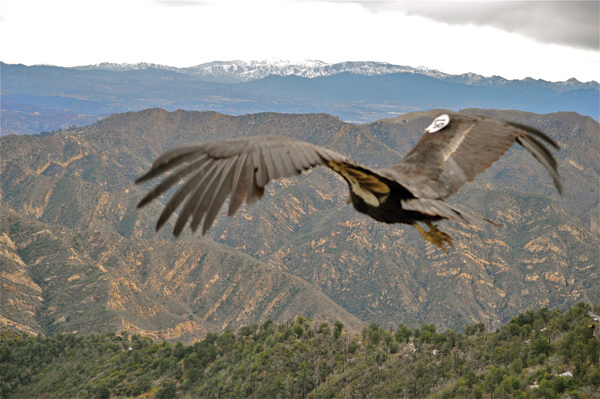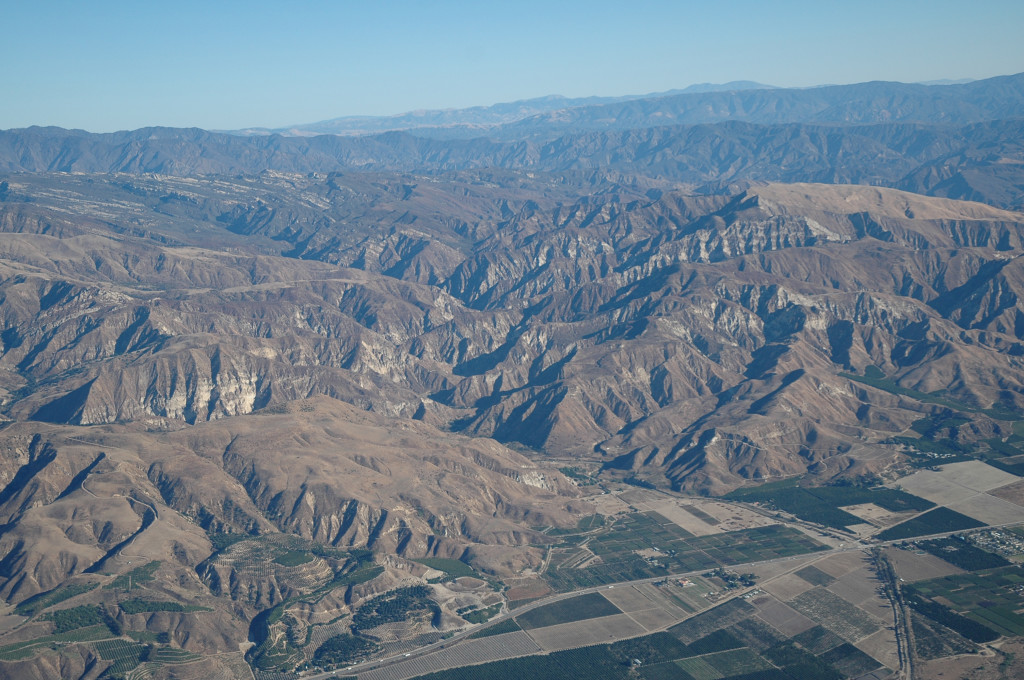Today, Los Padres ForestWatch filed an appeal seeking to halt the drilling of two new oil wells in a remote canyon near the Hopper Mountain National Wildlife Refuge and a known nesting site for the endangered California condor.
The wells are located approximately one mile from the boundary of the Hopper Mountain National Wildlife Refuge, a 2,471-acre sanctuary for endangered California condors. Federal biologists use the refuge as a field base of operations for the California Condor Recovery Program. The refuge contains condor release sites, holding pens, feeding stations, and condor nesting, roosting, and foraging areas. The wells are also located a mile away from a known condor nesting site just outside of the refuge boundary.
The Ventura County Planning Division approved the wells earlier this month without any public notice or hearing, and without any environmental review. Instead, the County signed off on the wells by issuing an over-the-counter zoning clearance, a routine process typically reserved for home remodels, patio cover construction, and swimming pool installation.

California condors are particularly susceptible to oil drilling operations. The noise and high activity levels associated with oil drilling can disturb condor nesting and roosting sites. Exposed oil and other toxic fluids pose a hazard to condors and other wildlife. In addition, condors can find microtrash – small bits of trash including wires, washers, nuts and bolts, glass, and plastic – on oil pads. Several young condors and condor chicks have recently died after ingesting large amounts of microtrash. Citing these risks, federal condor biologists with the U.S. Fish & Wildlife Service concluded in a 2011 report that “[t]he combination of condors and well pads creates a difficult management challenge for the California Condor Recovery Program.”
To reduce these risks, the U.S. Fish & Wildlife Service has recommended 23 measures to protect endangered condors from oil drilling operations. These recommendations were outlined in a letter from the Service’s Ventura Field Office to the Ventura County Planning Division in 2013, and include measures such as:
- keeping pads clean of all trash and other hazards;
- undergrounding or retrofitting power lines;
- installing anti-perching devices on equipment;
- educating oilfield employees on best management practices; and
- prohibiting wells and other infrastructure within 1.5 miles of known condor nesting sites.
The County Planning Division did not apply any of the 23 condor protection measures to the two new wells, placing condors in the area at serious risk of harm. The proposed well location is less than one mile from a known condor nesting site, according to data provided by the U.S. Fish & Wildlife Service.

In addition, the proposed drill site is approximately 70 feet from Hopper Creek, a tributary to the Santa Clara River. Endangered southern steelhead historically spawned and reared in Hopper Creek, and – according to a 2005 report – it contains some of the best steelhead habitat in the entire Santa Clara River watershed. The County’s zoning ordinance requires oil wells and other infrastructure to be placed at least 300 feet from the edge of bank to protect watercourses and stream habitat.
The ForestWatch appeal asks the Ventura County Planning Commission to overturn the Planning Division’s approval of the two wells, and to require a more thorough review of the risks and harms posed to California condors and water quality in Hopper Creek. The matter will likely be scheduled for a hearing before the Planning Commission later this year.







Comments are closed.